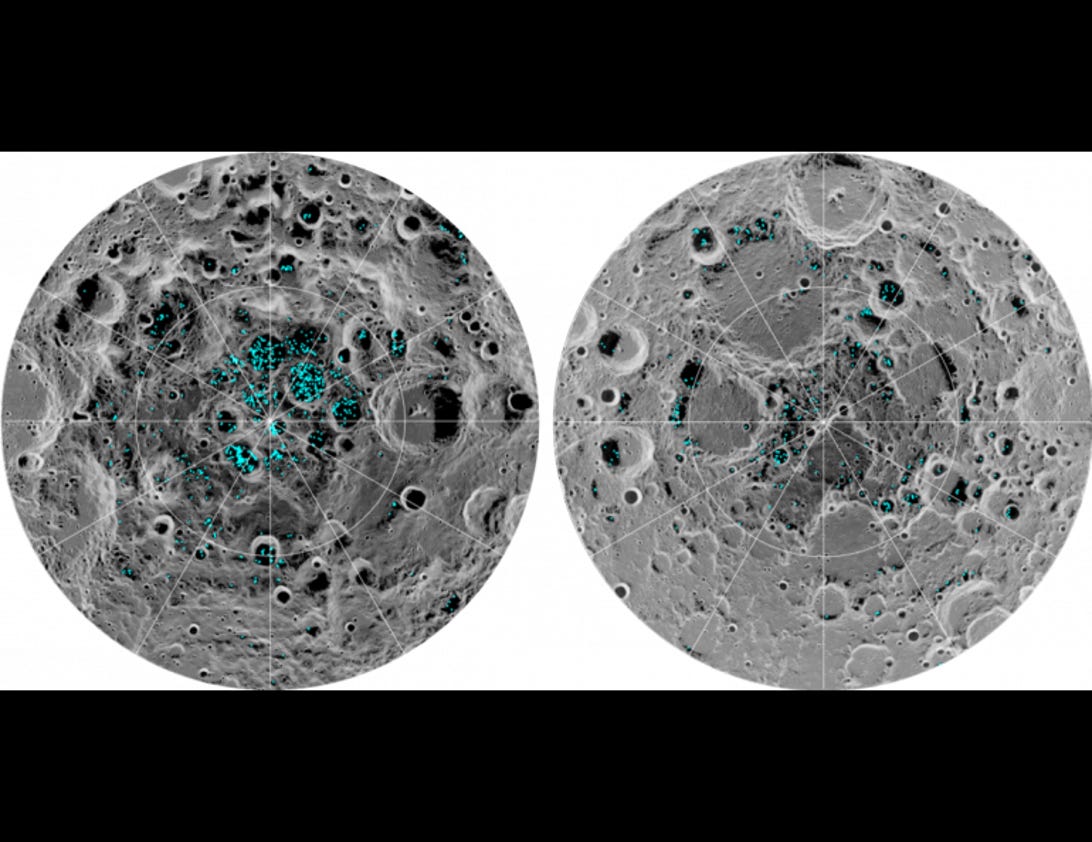[ad_1]
NASA plans to ship a staff of astronauts to the moon in 2025 armed with the thrilling process of creating the first-ever lunar science base. It is an formidable dream that stems from the company’s overarching Artemis venture, of which this 12 months’s Artemis I lift-off is the 1st important step.
However to build and are living in any form of Sci-Fi extraterrestrial house station, humanity must, neatly, are living. And to are living, we’d like water.
That is why, consistent with a paper revealed closing month within the magazine Medical Experiences, a bunch of researchers have some terrific information for the following technology of moon explorers. Consistent with their calculations, there is also an entire lot extra water at the moon than as soon as anticipated — and it sort of feels to have originated from none rather then the bluest planet of all: Earth.
“As NASA’s Artemis group plans to construct a base camp at the moon’s south pole, the water ions that originated many eons in the past on Earth can be utilized within the astronauts’ lifestyles improve device,” Gunther Kletetschka of the College of Alaska Fairbanks Geophysical Institute and lead creator of the learn about, stated in a observation.
For Artemis’ moon base camp, NASA has made up our minds that development will start on the lunar south pole, just because scientists already imagine there may be a great deal of frozen water hidden underneath the outside.
Then again, more often than not, lunar water research calculate this intended water quantity in response to theories that attach the amount to a mix of sun winds, asteroids and comets. For example, billions of years in the past, all over a duration referred to as the Overdue Heavy Bombardment, asteroids and comets stuffed with hydrogen and oxygen ions are concept to have impacted the lunar floor. Those debris probably fused in combination, shaped water, and voila.
The prevalent idea referring to sun winds, however, suggests robust gusts coming from the solar may’ve carried the megastar’s hydrogen and helium atoms towards the moon, interacted with leftover asteroid mud and just about generated water that approach. Either one of those hypotheses are comparable to the best way scientists believe water on Earth originated too.
However after learning lunar gravitational information, accumulated through NASA’s Lunar Reconnaissance Orbiter, the hot learn about’s group learned there may really well be a 3rd pathway to give an explanation for lunar water — and one that might account for no less than 3,500 additional cubic kilometers (840 cubic miles) of water on the lunar poles. For context, that is about equivalent to the volume of water in North The united states’s Lake Huron, the sector’s 8th biggest lake.

This symbol displays the distribution of frozen water on the moon’s south pole (left) and north pole (proper) as consistent with 2009. Blue represents water.
NASA
This is because, the researchers say, hydrogen and oxygen ions present in Earth’s higher surroundings may’ve as soon as escaped and fallen onto the lunar floor because the moon handed via our planet’s magnetosphere. Inside this area, Earth’s atmospheric ions have a fairly top likelihood of being form of repelled. And if the moon is correct there within the line of fireplace, the repelled debris would’ve principally shot at once onto the sparkling orb.
Additional, since the moon does not have a magnetosphere of its personal, it would not have had a solution to repel the ones debris again to Earth. As an alternative, it would were compelled to just accept the hydrogen and oxygen onto its floor.
Kletetschka compares the idea that to the moon being underneath a “bathe” of water ions propelling from the Earth.
The researchers say that after at the floor, those ions would then have blended to shape lunar permafrost and, via more than a few geological processes, this frost may’ve been pushed under the lunar floor. Slowly, it would have grew to become to liquid water.
If true, this might be superb for NASA’s Artemis venture as a result of no longer most effective can the astronauts faucet into the large water provide for survival, however the lunar house station too can use it for gasoline, too. Even deep house missions that’ll use the bottom as a commute checkpoint sooner or later can fill up on water like filling up on gasoline at a cosmic leisure house.
Plus, remarkably, Kletetschka and fellow researchers say this can be a conservative estimate — just one% of Earth’s atmospheric ions would’ve needed to get away and succeed in the moon for this large quantity of lunar water to exist. If any further than that minuscule fraction contributed to lunar water, neatly, possibly we will be able to sooner or later upload somewhat water park to our wide-eyed lunar society.
[ad_2]
